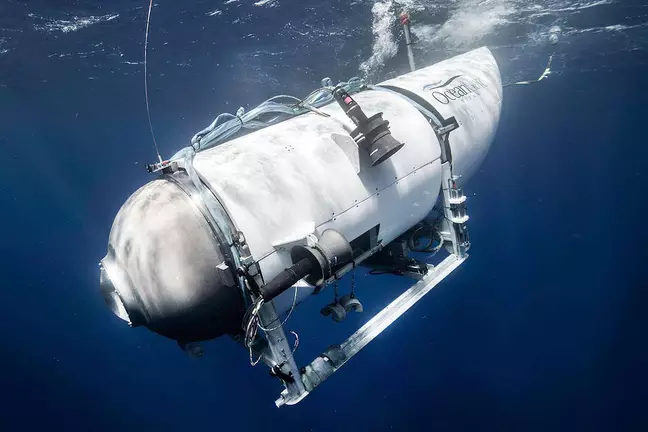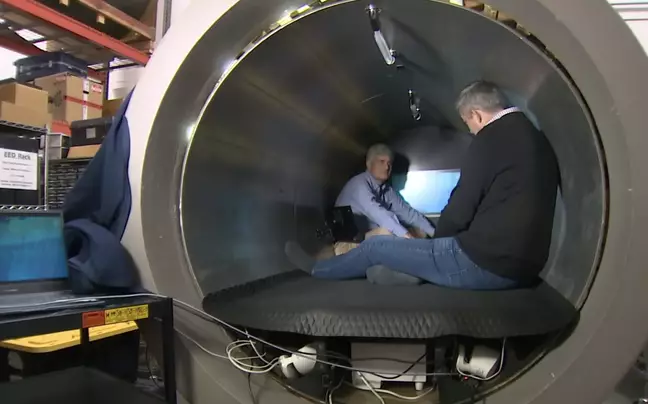A professor in marine engineering has shared his thoughts on what he believes is the most likely reason that the Titan submersible imploded during its mission to explore the Titanic.
Authorities have been removing remnants of OceanGate’s Titan from the Atlantic ocean this week, and also discovered ‘presumed human remains’ among the wreckage which I guess are so mangled and small they can’t even tell by looking at them.

As the investigation into the implosion of the vessel by the Marine Board of Investigation (MBI) continues, Dr Jasper Graham-Jones has suggested a number of factors which may have contributed to the disaster.
Stockton Rush, the CEO of OceanGate and one of the passengers who was on board Titan when it imploded, said himself during an interview once that some of the parts used to build Titan were made of ‘off-the-shelf components’.
Dr Graham-Jones, who works at the University of Plymouth, says one example of this is that the viewing window of the submersible was of subpar quality. He claims the window wasn’t certified to go down 12,500 into the ocean, which is where the Titanic wreckage sits.
He told The Sun:
“I think the guy who ran this was actually making big mistakes, and was overconfident in his calculations. Cracks would have formed.
They might not have been seen at first, but they start to become a little bit bigger each time before becoming a critical crack and failing.”
Sounds like it was a ticking timebomb. Another potential issue with the vessel may have been the corrosion of electronics used to control it, which could have been caused by leaking parts of the sub:
“This could have been an electrical catastrophe.
It could have been corrosion, it could have been a fire. Any leakage of water coming through to the electrics could lead to failure as well.
Some of the pipes and parts that lead outside could have begun to leak. If you have a wire going outside, then those wires going through land could actually start to leak. They could have corroded.”
Obviously travelling down so deep into the ocean, the Titan sub would need to be able to withstand the extreme pressure of water bearing down on it. So it’s not exactly ideal if there are even small cracks in the structure:
“The crack could be brittle, or ductile, and related to fatigue and de-lamination.
By scanning under an electron microscope, you can see the fatigue and confirm the speed and direction of the cracks.”
Graham-Jones also mentioned that investigators will be searching for signs of unusual heat during their probe, as that may also have contributed to weakening the vessel and causing the imposion:
“Has there been excessive heating, or corrosion or buckling? Distortion of joints and fittings?”
A challenge faced by investigators is to determine which problems were already present on Titan before it imploded, and which were caused by the implosion itself, which you can imagine could get a little tricky.
The good news is that the debris recovered so far will provide vital clues:
“It is critical to make sure they try and collect carefully so that no further damage is caused to collected parts.
From visual and magnified views, components’ crack paths can be recorded. Typically, a map of all these crack paths this can be fixed to a few initial locations. From these initial locations possible failure causes can be suggested.”
Captain Jason Neubauer, chair of the Marine Board of Investigation, has admitted there is a ‘substantial amount of work to be done’ to understand what led to the implosion, so it will probably be some time before we get an official word on it. Thoughts with the victims and their families, and let’s hope they get the closure they need when the investigation is finally over.
For the ‘Iron Lung’ horror game that has seen a dramatic rise in sales since the Titan sub story broke, click HERE.

















